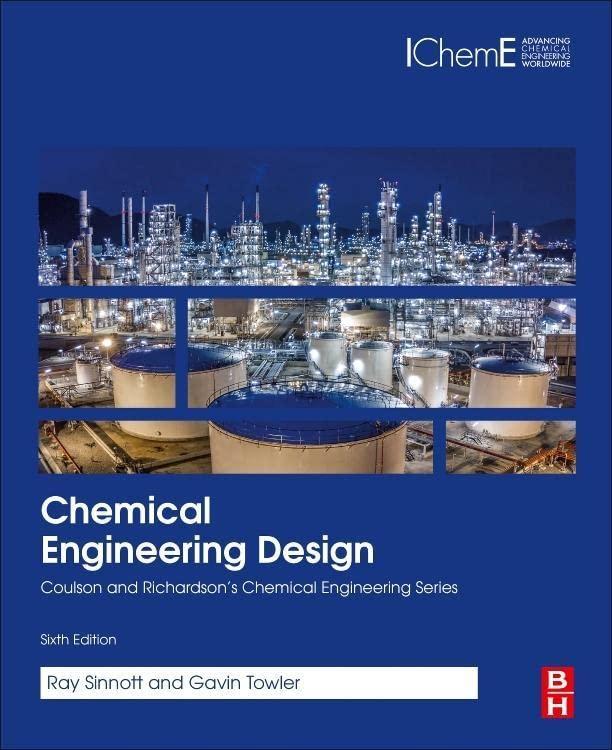Ethanol can be produced by fermentation of sugars and is used as a gasoline blending component. Because
Question:
Ethanol can be produced by fermentation of sugars and is used as a gasoline blending component. Because the sugars can be derived from biomass, ethanol is potentially a renewable fuel. In the fermentation of cane sugar to ethanol, sucrose (C12H22O11) is converted by yeast (Saccharomyces cerevisae) to yield ethanol and CO2. Some sucrose is also consumed in maintaining the cell culture in the fermentation reactor. The fermentation reaction can be carried out in a continuous reactor as long as the ethanol concentration does not exceed about 8 wt%, at which point the productivity of the yeast declines significantly. The sucrose is fed as a 12.5 wt% solution in water, which must be sterilized before it can be fed to the reactor. The sterilization is usually accomplished by heating with steam. Carbon dioxide is vented from the fermentation reactor. The liquid product of the fermentation reactor is sent to a hydrocyclone to concentrate the yeast for recycle to the reactor. The remaining liquid is sent to a distillation column known as a “beer column”, which concentrates the alcohol to about 40 mol% ethanol and 60 mol% water in the distillate. The recovery of ethanol in the beer column is 99.9%. The bottoms stream from the beer column contains the remaining components of the fermentation broth and can be processed for use as animal feed.
1. Draw a flow-sheet for this process.
2. Estimate the stream flow rates and compositions for a production rate of 200,000 US gal/d of dry (100%) ethanol.
3. Estimate the ethanol lost in the CO2 vent gas.
4. Estimate the reboiler duty of the beer column.
Data:
1. Yield per kg sucrose: ethanol 443.3g, CO2 484g, non-sugar solids 5.3g, yeast 21g, fermentation byproducts 43.7g, higher alcohols (fusel oil) 2.6g.
2. Conversion of sucrose, 98.5%.
3. Yeast concentration in fermentation reactor at steady state, 3 wt%.
4. Fermenter temperature, 38 °C.
Step by Step Answer:

Chemical Engineering Design
ISBN: 9780081025994
6th Edition
Authors: Ray Sinnott, R.K. Sinnott, Sinnott Gavin Towler





